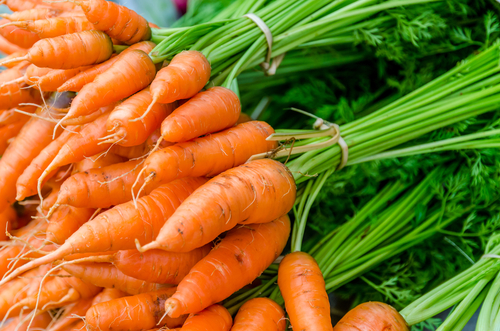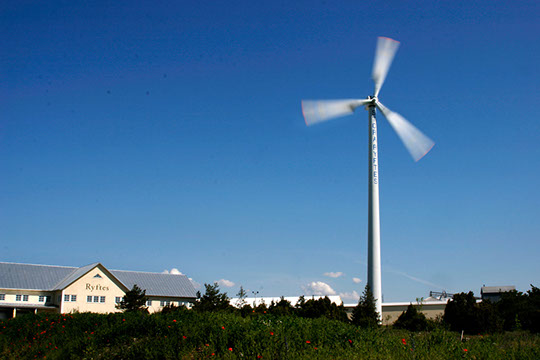ZERI
Zero Emissions Research and Initiatives
CARROTS





© Shutterstock
In 1995, at the invitation of Prof. Dr. Carl-Göran Hedén, a member of the Swedish Royal Academy of Sciences, the ZERI Foundation undertook with the business and academic community of the Island of Gotland (Sweden) undertook an envisioning exercise that gathered together students, bankers, policy makers, researchers, and businessmen to seek solutions.
Any observer looking for development opportunities other than tourism will immediately focus on the countryside. Dotted with picturesque churches and domiciles, the agricultural landscape has been lovingly shaped throughout the centuries. When sugar beets were introduced 100 years ago, they were successful enough to create a new industry. Lacking appropriate economies of scale, the sugar mill closed as globalization consolidated. There was little incentive to pursue agriculture, except carrots. Famous for their “sandy” look, carrots from Gotland acquire a superior taste in the island’s alkaline soil. Although producing carrots was not a problem, selling them from the middle of the Baltic Sea was a challenge. Furthermore, it was common for grocery store purveyors to reject a substantial portion of the harvest that did not meet their rigorous shape conformation standards.
The citizens evolved an innovative approach that took advantage of this natural cascading of nutrients while generating value and jobs. Håkan Ahlsten, the local banker, liked the idea of manufacturing a simple product: oven-fresh carrot cakes. With such ready access to fresh and abundant raw material, a carrot cake enterprise was impossible to ignore. Agreement was reached, and a delicious carrot cake recipe was quickly developed. Baked, then frozen, the Gotland cakes became much in demand throughout Sweden and as far overseas as Singapore and Hong Kong. In five years, employment at the local bakery jumped from a mere five to thirty.
The next major initiative was precipitated by the desire to achieve better market value by utilizing the entire harvest. Mr. Yngve Andersson, another of Gotland’s upstanding citizens, invested in the design and construction of a carrot-sorting center where nearly the entire island's harvest could be stored, sorted, and processed using sophisticated machinery. The massive harvest was machine-sorted into specific categories. Every variety was individually packaged, from baby carrots, to long, thin carrots, to stronger and shorter carrots, to odd-shaped roots. Surprisingly, cleaned and packaged baby carrots, which were formerly considered too small to have any market value, could be sold for four times more than standard carrots. The largest carrots are not packaged but become carrot juice, a very profitable niche market. Interestingly, the largest carrots produce the most juice – as much as 40% more by volume. The shredded carrot pulp, rather than becoming waste, is an ideal pig feed.
Carrot sorting to generate higher value from the existing harvest posed major challenges. The machinery could only cope with processing the entire harvest if the total volume were distributed over the entire year rather than concentrated in the six-week harvest season. However, processing the harvest over twelve months required an investment in cooling the warehouse to a constant temperature of 32° F. When the economic persuasion of better price supported the feasibility of this undertaking, the next challenge was meeting the operation’s now dramatic energy requirements.
With the figures before him, Mr. Yngve Andersson decided to take the risk of exclusively powering the facility with wind energy. The entire operation – warehousing, sorting, processing, packaging, selling into market segments, including deep-frozen carrot cakes, is entirely powered by wind energy. The capital investment in wind energy was easily recovered from international sales. The total estimated direct and indirect employment sums to 250 jobs. Rethinking carrots generated jobs, cut costs, and successfully pointed the Gotlanders to a progressive path for job generation and livelihood security.
Finding value in what is locally available creates sustainable and competitive industries that can influence economies, even when they are located on an isolated island in the Baltic Sea. To the islander’s credit, this is not their only initiative. Other breakthroughs demonstrate Gotland’s pioneering spirit. Carrots are the most impressive case, but the combination of beer and bread is just as commendable. The Gotland Brewery supplies excellent beer to the local population. The spent grain left from the brewing process is shipped to the local bakery, Eskelunds Hembageri AB, where it is made into bread – another fine example of turning waste from one process into raw material for another. By using what is locally available, cascading nutrients, and encouraging entrepreneurs to implement competitive ideas, the citizens of Gotland are years ahead of their peers.